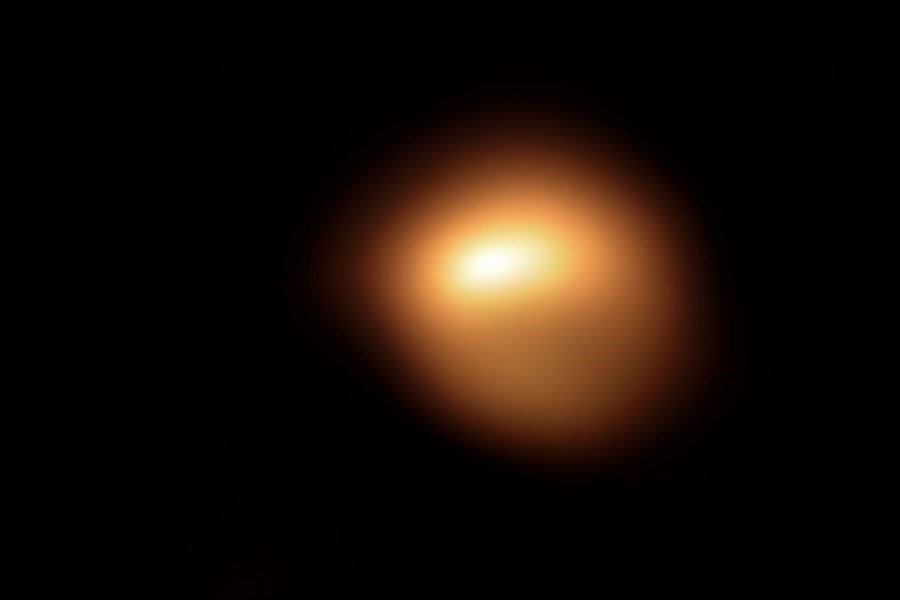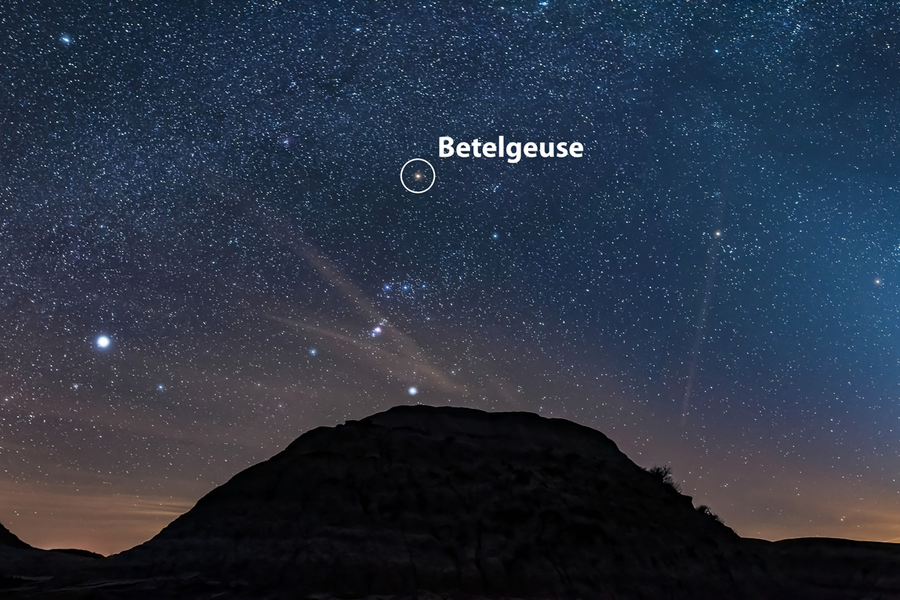Reprinted with permission from The Christian Science Monitor
There are few astronomical events visible to the naked eye as rare as a supernova. But the unexpected dimming of one of the sky’s brightest stars has some stargazers wondering if it’s about to happen.
FEBRUARY 19, 2020 - For the most part, the stars that populate the night sky today are the same pinpricks of light that our great-grandparents and their great-grandparents before them gazed upon. Constellations of the brightest stars, like Orion the hunter, have connected humanity to the cosmos for generations. These familiar night sights have drawn our eyes up, enticing us to ponder what else might be out there in the vast universe.
 This image, taken late last year, shows the surface of red supergiant star Betelgeuse, which has been undergoing unprecedented dimming in the past several weeks.ESO/M. Montgargès et al.
This image, taken late last year, shows the surface of red supergiant star Betelgeuse, which has been undergoing unprecedented dimming in the past several weeks.ESO/M. Montgargès et al.
But something strange is going on with one of the most familiar objects in the sky. Betelgeuse (generally pronounced “beetle juice,” though there are several acceptable variations) typically ranks at least 11th or so among the brightest stars in the sky. It also marks the “shoulder” of the prominent constellation Orion. Over recent weeks, astronomers have noticed that Betelgeuse appears a lot fainter than usual – about a third of its normal brightness. And some have suggested that change might be a sign that the end is near for this familiar star.
With a distinctive reddish hue and brightness, Betelgeuse is easy to spot with the naked eye. It is, in fact, a red supergiant. That means that although it is a cooler star, it’s among the largest stars in the universe by volume. If it were in the place of the sun in our solar system, it would fill the space beyond the orbits of Mercury, Venus, Earth, Mars, and maybe even Jupiter.
A red supergiant is a more massive star toward the unstable end of its evolution. When it was a massive main sequence star, it fused all the hydrogen in its core into helium, and is now working its way through that helium, fusing it into heavier elements until eventually solid iron builds up in the core. Then, the star will suddenly collapse in on itself and expand quickly in a supernova explosion, leaving behind either a black hole or a dense neutron star.
Some star-watching enthusiasts have suggested that perhaps the dimming in Betelgeuse’s light may be the lead up to an explosive death for the star. But supernovas are practically impossible to predict, and astronomers are doubtful that the end is nigh.
 The constellation Orion, with Betelgeuse as its left shoulder, sits above a hill on a spring evening at Dinosaur Provincial Park, Alberta, with urban sky glow from distant Calgary.Alan Dyer/AP
The constellation Orion, with Betelgeuse as its left shoulder, sits above a hill on a spring evening at Dinosaur Provincial Park, Alberta, with urban sky glow from distant Calgary.Alan Dyer/AP
Betelgeuse is what is known as a “variable star,” and naturally goes through cycles of brightness. Although this round of dimming has been outside previously measured norms, it could still be within the realm of Betelgeuse’s natural dips, some astronomers say.
Additionally, aging stars also tend to belch out gas and dust, so perhaps a cloud of dust is simply blocking our view of much of the star’s light. Or maybe, others have suggested, parts of the surface of the star are going through some sort of cooling process.
Still, eventually Betelgeuse will explode. It could be tomorrow. Or it could be in another 100,000 years.
No. Although the star is only some 650 light-years from Earth, it’s still far enough that the radiation from its explosion won’t affect us. But it will dazzle anyone who is around to view it. Astronomers think it could be as bright as a full moon – perhaps visible in our sky even during the day – and its glow could linger in the sky for months or even a year.
Supernovas may occur all over the universe, but it’s rare that such stellar explosions occur close enough for us to witness them. The last time a supernova was visible to the naked eye on Earth was in 1604.
As such, astronomers haven’t had a chance to study the lead-up to the explosion of a red supergiant star. So they’re keeping a close eye on Betelgeuse.
Whenever it blows, the star will have already provided astronomers with a much deeper understanding of the final days of massive stars. It will also serve as a reminder to stargazers that the universe is a dynamic, ever-changing place.
Page created on 2/20/2020 1:02:24 AM
Last edited 2/20/2020 1:18:22 AM
